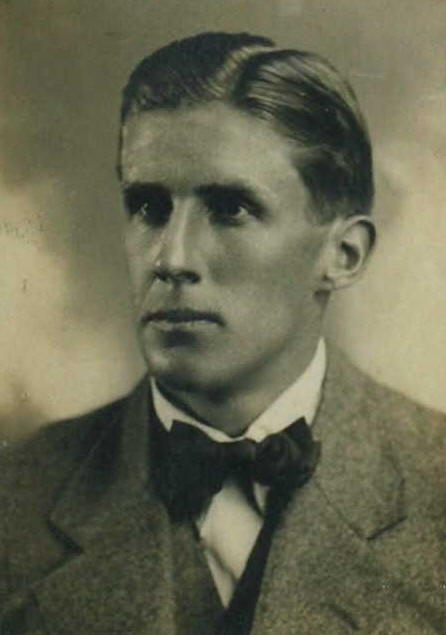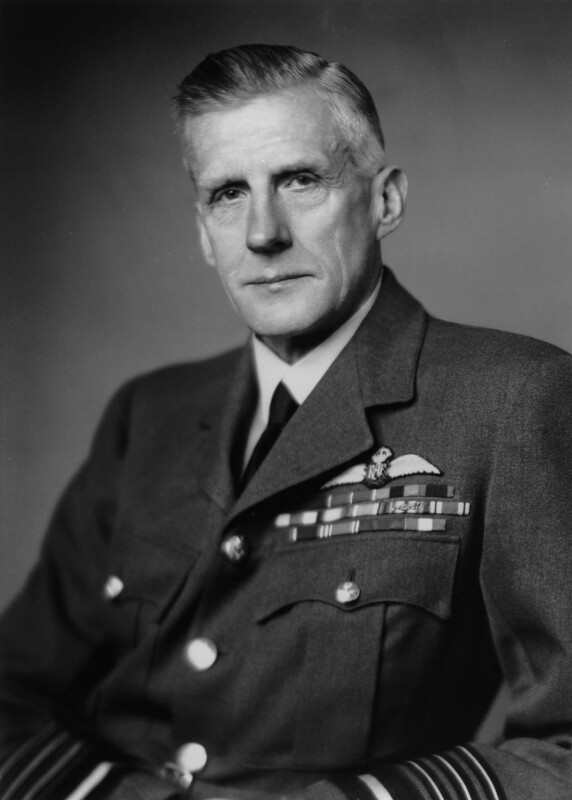half-plate glass negative, 15 March 1946
NPG x166892
© National Portrait Gallery, London
Air of Authority - A History of RAF Organisation

 Edgar
Rainey
Edgar
Rainey
b: 9 Jun 1886
r: 19 Nov 1945
d: 15 Aug 1973
GCB -
1 Jan
1946 (KCB - 2 Jan 1933, CB - 4 Jun 1928),
GBE - 1 Jan 1943, CMG -
3 Jun
1919, DSO - 1 Jan 1918, MC - 14 Jan 1916,
MiD - 22 Jun 1915,
MiD - 1 Jan 1916,
MiD - 4 Jan 1917,
MiD - 11 Dec 1917, MiD - 31 Dec 1918,
MiD - 11 Jul 1919, LoH, C -
14 Jul 1917, DL
(Wiltshire) - 30 Sep 1952, ADC.
(Army):
- 2 Lt: 16 Aug 1905, Lt:
5 Dec 1907 [24 Sep 1907], (T)
Capt: 28 Nov 1914,
Capt: 20 Dec 1914, (T)
Maj: 13 Sep 1915?, (T)
Lt Col: 1 Feb 1916,
(B) Maj: 1 Jan
1917, (T) Brig-Gen: 17 Oct
1917.
(RAF):
- (T) Brig-Gen [Lt Col]:
1 Apr 1918, Act Col: 1 Jun 1919, Wg
Cdr: 1 Aug 1919 [1 Apr 1918], Gp
Capt: 8 Aug 1919, A/Cdre: 30 Jun
1923, AVM: 1 Jan 1930, AM:
1 Jul 1934, ACM: 1 Jul 1937.
Photo (left) - taken from his RAeC Certificate
Photo (right) -
© National Portrait Gallery, London
xx
xxx xxxx: Attended
RMC Sandhurst.
16 Aug 1905: Officer, 1st Battalion Royal Irish Rifles
xx Aug 1914: U/T Pilot, Central Flying School.
12 Sep 1914: Flying Officer, RFC
28 Nov 1914: Pilot/Flight Commander, No 1 Sqn RFC. (Various types – Farnborough/Western Front)
7 Mar 1915: Embarked to France (by air)
8 Mar 1915: ?
24 Jun 1915: Appointed Squadron Commander.
5 Jul 1915: Returned to Home Establishment
13
Sep 1915: Officer Commanding, No 15 Sqn RFC. (BE2c –
Dover)
1 Nov 1915: Officer Commanding, No 3 Sqn RFC. (Morane Parasol – Western Front)
26 Jan 1916: Posted to HQ RFC in the Field
27 Jan 1916: Posted to HQ, 3rd Wing
1 Feb 1916: Officer Commanding, 3rd (Corps) Wing RFC.
12 Feb - 3 Mar 1917: Temporary duty in Italy
25 Aug - 8 Sep 1917: Officer Commanding (Temporary), 4th Brigade
9 Oct 1917: Returned to Home Establishment
7
Nov 1917:
Inspector of Training, HQ Training Division.
1 Apr 1918: GOC, Training Division
23 May 1918: GOC, X Brigade
xx
xxx 1918:
Chief Staff Officer, HQ RAF in France.
1
Jun 1919:
Deputy Director of Training.
1 Aug 1919: Awarded Permanent Commission as a Lieutenant Colonel.
1 Aug 1919: Appointed Deputy Director, 2nd Class
1 Jul 1921: Appointed Air ADC to The King.
1 Feb 1922: Air Secretary to the Secretary of State for Air
17 Aug 1923: Supernumerary, RAF Depot.
1 Oct 1923: President of the Aerodrome Board.
1
Oct 1925:
Attended RN Staff College.
28
Mar 1926: Commandant, RAF Staff College
22 Sep- 2 Oct 1930: Placed on half pay list, Scale A.
2
Oct 1930:
AOC, Iraq Command.
23
Sep 1932:
Supernumerary, RAF Depot.
4 Dec 1932 - 1 Feb 1933: Placed on half pay list, scale B
1
Feb 1933:
Director of Operations and Intelligence/Deputy Chief of the Air Staff.
9 Feb - 2 Mar 1935: Placed on half pay list, scale A
2
Mar 1935:
AOC, RAF in India.
12
Sep 1937:
AOC in C, Bomber Command.
4
Apr 1940:
Inspector-General of the RAF.
xx xxx xxxx - 4 May 1946: Principal Air ADC to The King.
He was educated at Radley and Eastman's School before
entering the RMC, Sandhurst and gained RAeC Certificate, No 887
on 19 August 1914.
As a Wing Commander in WW1, he was one of the few officers of his rank who
regularly flew over the lines and carried out spotting duties, usually every day
which proved to be an extremely high morale
booster to his overworked crews. On
taking over Bomber Command, he lost no time in assessing its preparedness for
war. Unfortunately the report he produced was somewhat damning.
He also campaigned for all aircrew to be fully professional which
resulted in the trade of 'Air Gunner' being officially recognised in 1939.
His campaign also brought about the establishment of a Central Gunnery
School. A further innovation he
foresaw was the need for a 'speed bomber' which eventually emerged from De
Havilland's drawing board, thanks to the support of Wilfred Freeman, as the
Mosquito. Yet another shortcoming
he recognised and tried, unsuccessfully, to have remedied was the need to
provide escort fighters to his bombers, which
eventually resulted in a night bomber offensive when it became obvious
that daylight operations by the
bombers of the day would suicidal.
Citation for the award of Companion of the Order of the Bath
"LUDLOW-HEWITT, Edgar Rainey, A/C, CMG, DSO, MC
In recognition of distinguished service as Commandant of the Royal Air Force Staff College."
(Source: Air 30/72)
He appears to have been a favourite of C.G. Grey who wrote the following of G/C Ludlow-Hewitt (Aeroplane, 8 February 1922):
"Group Captain Ludlow-Hewitt was an officer of the Royal Irish Rifles who joined the RFC some time before the war and in it distinguished himself not only as a very skilful and gallant pilot but as an exceptionally efficient officer. The work of his squadron and later his Wing and Brigade was always done with clockwork regularity and with the maximum effort. He earned the respect of his juniors by never asking anybody to do anything that he did not do himself, and in most cases he did it better."
Again, writing in Aeroplane in 1930, Grey stated:
"Perhaps one may be forgiven for recalling here the fact that one of Air Vice-Marshal Ludlow-Hewitt’s peculiarities during the war 1914-18, even when he held high rank, was that he would insist on flying any and every type of machine which came under his command. This was not regarded as quite proper by some officers of equal rank. Another habit of his was to go out with dawn patrols or with bombing raids which started before dawn, just to see what happened to his squadrons and how they reached their objectives. Occasionally pilots found disconcerting messages from him inquiring why they were not where they ought to have been over enemy territory when he happened to pass that way. All of which earned for him the high esteem of the best war pilots and made those of lower quality quite uncomfortable. His splendid Service record should assure for him success in Iraq."
This page was last updated on 16/03/25©
![]() F B Ludlow
F B Ludlow ![]()